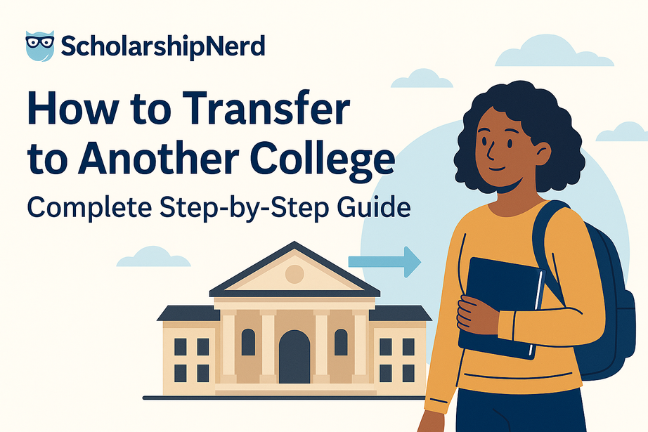Most U.S. borrowers carry between $20,000–$25,000 in outstanding student loan debt, although total costs vary by degree, lender, and repayment plan. For example, borrowing $30,000 on a standard 10-year plan at today’s average rates often results in monthly payments around $330–$370 and a total repayment cost of $39,000–$44,000, including interest.
According to the Pew Research Center, about one in four U.S. adults under 40 holds education debt. Understanding loan costs before borrowing helps you make confident, informed financial choices about college.
When we talk about “cost,” it includes your principal, interest, and fees, as well as your repayment plan. Knowing how these factors interact can help you borrow wisely, select affordable schools, and plan your repayment strategy.
How Much Students Borrow: Averages by Degree and Loan Type
Borrowing amounts increase as you pursue higher degrees. Undergraduate borrowers usually owe less, while graduate and professional students carry significantly larger balances. The visualization below shows average total student loan debt by degree level in the U.S. for 2024–2025, using national averages from Forbes Advisor and Pew Research Center.
Average Student Loan Debt by Degree Level (U.S., 2024–2025)
This chart highlights how much debt typically increases with each additional degree:
Federal loans account for about 92% of total student debt, meaning most borrowers fall under federal interest rate and repayment policies. Understanding these averages helps you benchmark your own borrowing expectations and evaluate what’s manageable.
Monthly and Lifetime Repayment Cost: What You Will Actually Pay
To make these numbers more tangible, let’s see what typical monthly payments and lifetime costs look like.
At current federal rates for 2025, a $20,000 undergraduate loan paid over 10 years at about 6.39% interest comes to roughly $227 per month, totaling $27,200 with interest. A $35,000 balance on the same term would mean about $397 per month and $47,600 total repayment.
These figures align closely with BestColleges’ analysis, which reports an average student loan payment just above $300 per month for borrowers on standard plans.
Your repayment plan significantly affects both your monthly payment and lifetime cost:
- - Standard 10-year plan: Higher monthly payments but lower total interest
- - Extended 15–25-year plans: Lower monthly payments but much higher total interest
- - Income-Driven Repayment (IDR): Payments adjust to income and can end in forgiveness after 20–25 years, although total interest paid is often higher
To model your own repayment cost, try the interactive tools provided by Federal Student Aid.
Interest Rates and Fees: How Borrowing Cost Adds Up
Federal student loan rates reset annually in July and stay fixed for the life of the loan. For the 2025–26 academic year, new loans carry the following fixed rates:
- - Undergraduate Direct Subsidized/Unsubsidized: 6.39%
- - Graduate Direct Unsubsidized: 7.94%
- - Parent/Grad PLUS Loans: 8.94%
You can confirm current rates anytime on studentaid.gov.
Subsidized loans don’t accrue interest while you’re in school, whereas unsubsidized and PLUS loans do. Even a one percent rate difference can add hundreds or thousands of dollars to your total repayment cost.
Private loans set rates based on credit, income, and market conditions. They can be competitive for well-qualified borrowers but usually lack federal protections like income-driven repayment or forgiveness programs. Always compare APR, fees, and in-school interest policies before deciding which loan to pursue.
What Increases Your Cost: What You Can and Cannot Control
Some cost factors are in your control and others are not. Keep these things in mind to help minimize your total loan repayment costs.
You can control:
- - School choice: In-state public or community colleges typically reduce borrowing needs
- - Time to degree: Staying on track minimizes extra tuition and living costs
- - Repayment behavior: Paying interest while in school or choosing shorter terms saves money
- - Living expenses and work: Even part-time income can offset borrowing
You cannot control:
- - Federal rate changes: These are set each year by Congress and the U.S. Treasury
- - Policy changes: Forgiveness and repayment rules evolve, so check for updates at studentaid.gov/announcements-events
Smart Ways to Estimate and Minimize Your Student Loan Cost
1. Estimate your true cost before you borrow.
Use each school’s Net Price Calculator and combine it with a loan simulator to see your likely monthly and lifetime payments.
2. Set a borrowing cap tied to your expected income.
Aim to keep total debt below your first-year salary, or no more than 1–2 times that amount if you’re entering a higher-earning field.
3. Maximize scholarships and grants.
Start with our How to Pay for College Tuition guide to find verified funding opportunities and reduce your borrowing needs.
4. Choose manageable repayment terms.
Shorter terms mean higher monthly payments but much lower total interest.
5. Pay interest while in school if possible.
This simple step prevents unpaid interest from capitalizing and making your balance grow faster.
FAQ: Common Questions About Student Loan Costs
How much does the average student borrow in the United States?
The median balance is about $20,000–$25,000, with higher totals for graduate borrowers. See Pew Research’s data for details.
What’s the average student loan monthly payment?
About $300–$350 per month, according to BestColleges.
Can I estimate my total cost before starting college?
Yes. Combine a school’s net price estimate with the Federal Loan Simulator to project payments over time.
What happens if I delay or miss student loan payments?
Interest accrues during deferment and forbearance, and defaulting can severely harm your credit. If you’re struggling, contact your loan servicer and explore federal repayment options for support.
Compliance and Transparency
This article is for educational purposes only and should not be considered financial, tax, or legal advice. Loan rates, policies, and eligibility can change each year. Always confirm details with studentaid.gov or your school’s financial aid office before borrowing.




